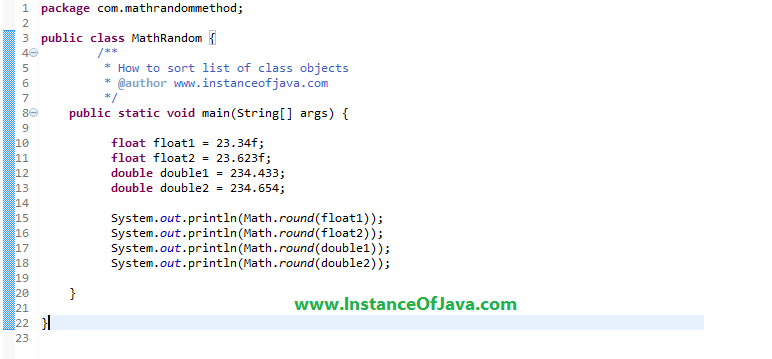
#Math.random java in a range code#
This code is an example of a simple Java program that uses the Math.random() method to generate a random floating-point number and print it to the console. To understand Math.random() better, let’s look at some examples, There are no parameters to the Math.random() function Java Math.random() Example It returns a pseudorandom double value greater than or equal to 0.0 and less than 1.0 Parameters

The returned value of Math.random() can be used in a variety of ways, such as generating random numbers within a specific range, shuffling arrays, and more. However, the default seed is based on the current time, which makes the generated numbers appear random. The Math.random() method generates a pseudo-random number using a deterministic algorithm, meaning that the sequence of numbers generated will be the same if the same seed is used. The Math.random() method in Java is a static method in the class that returns a random floating-point number between 0.0 (inclusive) and 1.0 (exclusive).
#Math.random java in a range how to#
In this blog, we will discuss the basics of the Math.random() method and how to use it in Java to generate random numbers. It is optimized to generate random numbers quickly, making it an ideal choice for high-performance applications where speed is a concern. It can be used to quickly generate random numbers within a specified range, making it a popular choice.Īnother advantage of Math.random() is its performance. To generate Random Integer numbers within the given range, we need to use getFloat() method as shown next.

One of the main benefits of the Math.random() method is its ease of use. The returned value follows a uniform distribution, meaning that each number within this range has an equal probability of being generated.

The Math.random() method in Java is a built-in function which is a part of the java.Math class.


 0 kommentar(er)
0 kommentar(er)
